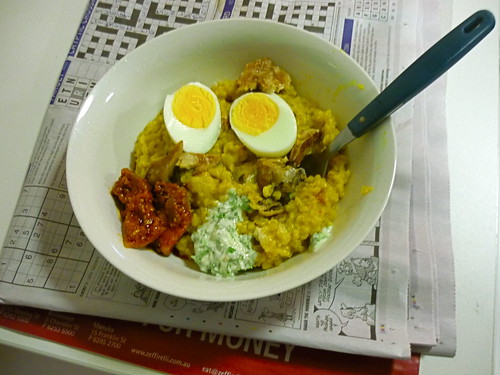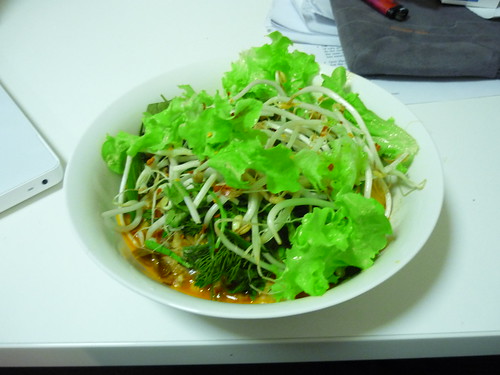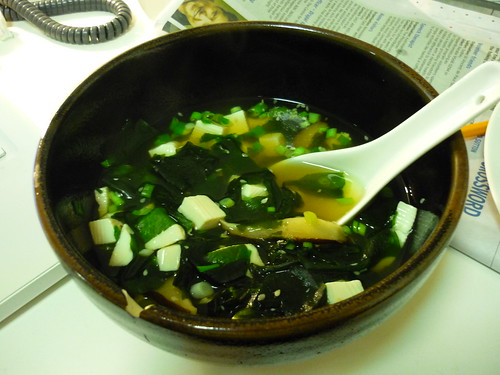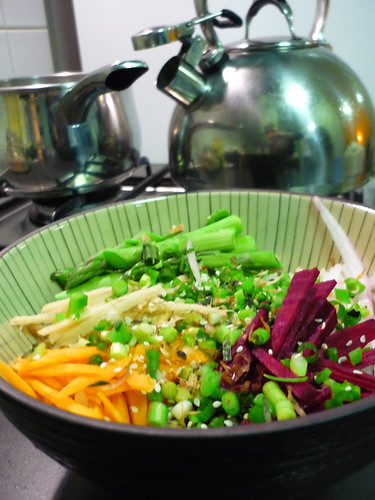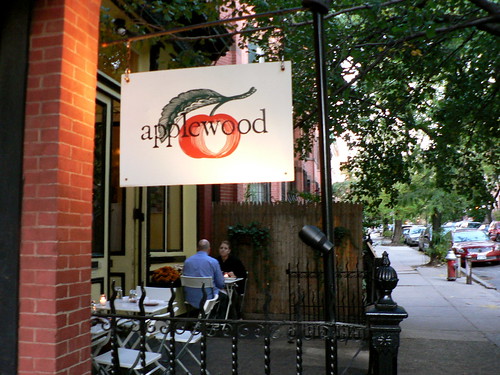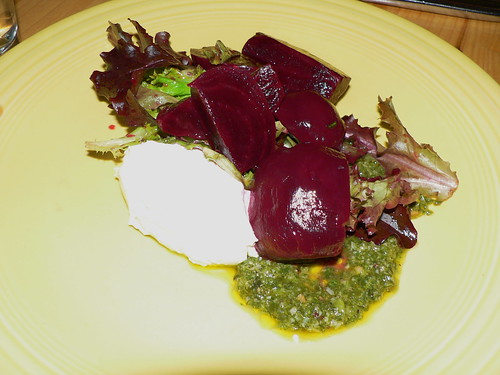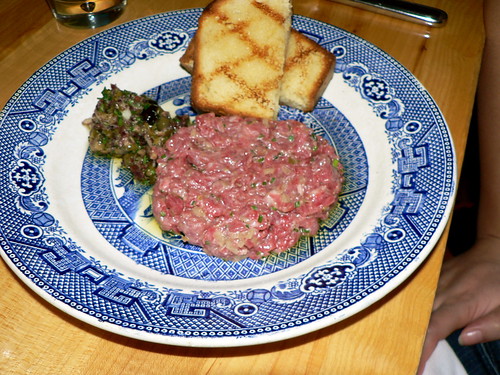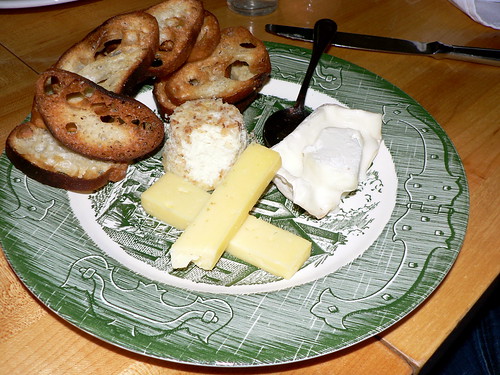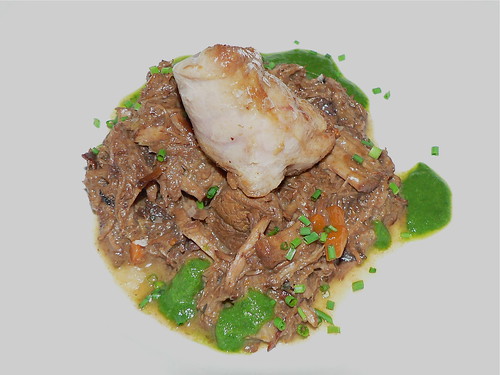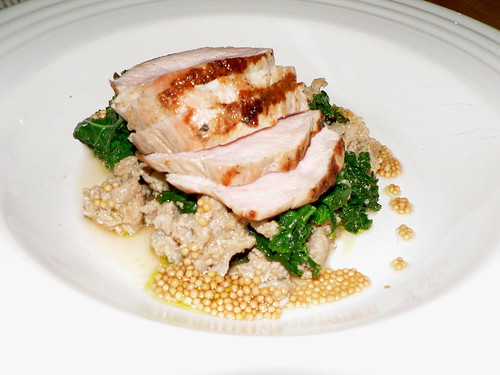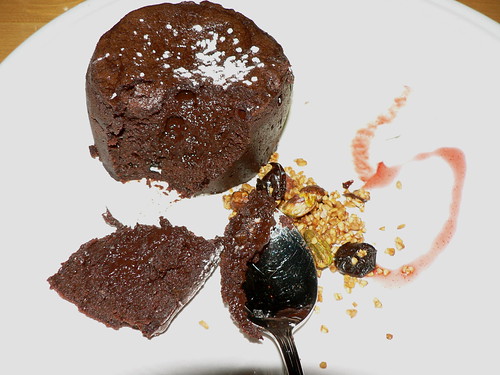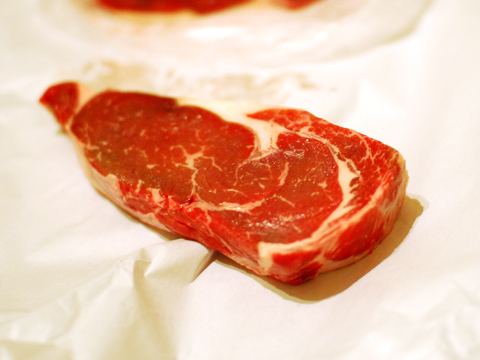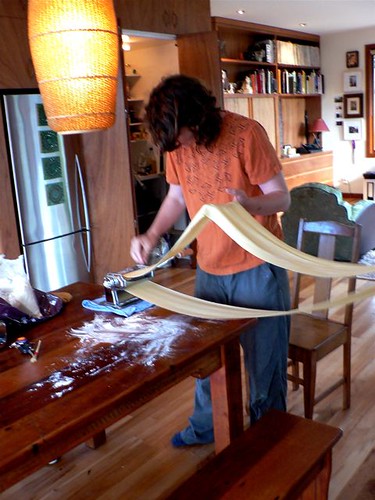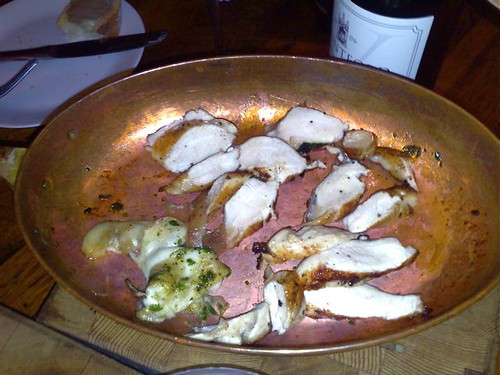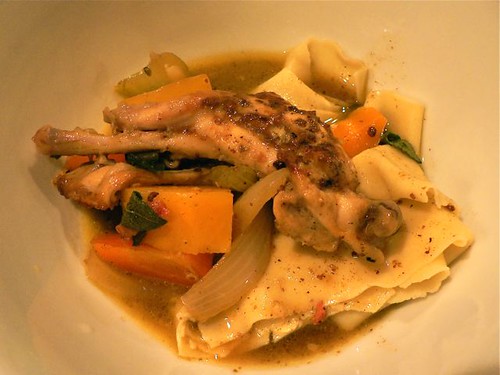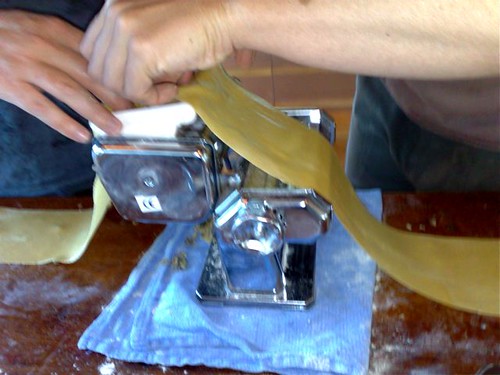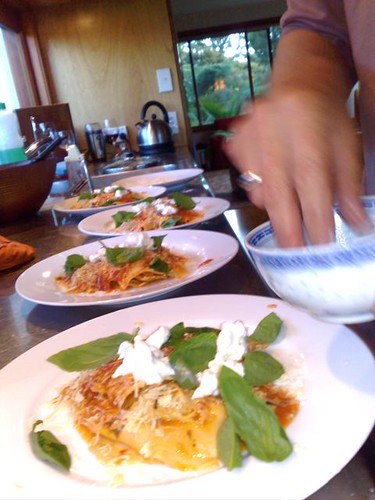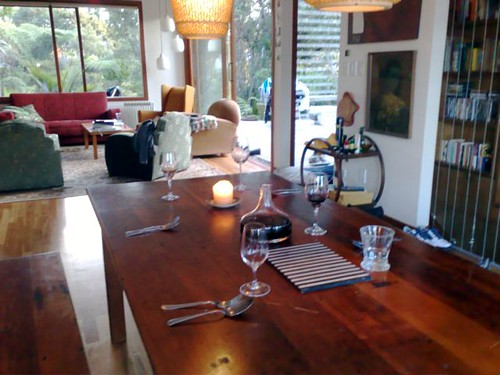Thursday, 4 September 2008
by Dr Maytel
Since Thailand is in the middle of yet another political melt down, and the sore looser opposition - the so called People's Alliance for Democracy (PAD) - have engaged in their dangerous game of brinkmanship aimed at ousting Thailand's democratically elected government, the old part of the city has become off limits unless you want to become stuck in outrageous traffic or potentially a military crackdown. What is being interpretted by international media and leading scholars as a class showdown between the overwhelming majority rural and urban poor voters that support the government versus the minority PAD middle class Bangkokians and elite royalists, who are hoping to change the entire electoral system to 70 per cent appointed and only 30 per cent elected, the current meltdown has the potential to spell the end of democracy in Thailand. (See
New Mandela for more commentary)
Of course this is very upsetting and on a less serious note, it makes me wonder, am I fated to never go on Austin Bush's famous Banglamphu eating tour. Last time we tried it was a Sunday and most of the places closed. Before that I was out of the country. I wonder, will I never taste the delights of Chote Chitr's real mee krob? That Sunday , before the meltdown, we ended up at Sorndaeng an old school restaurant near the independence monument, a place that my PAD loving father recommended. I'd like to go back again but I wonder, are my hopes of another Sunday lunch at Sorndaeng dashed before I depart Thailand indefinitely?
Located near the independence monument, the site of previous military crackdowns of the past, Sorndaeng has stood the test of time. Governments and coups have come and gone but Sorndaeng, it seems remains. Replete with its piano lounge singer, chintzy chandeliers and bow tied waiters. It's as old school as the king and all that represents
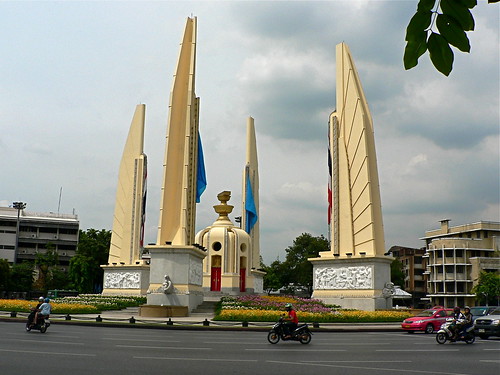
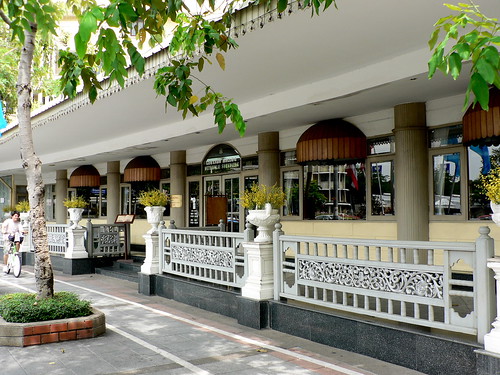
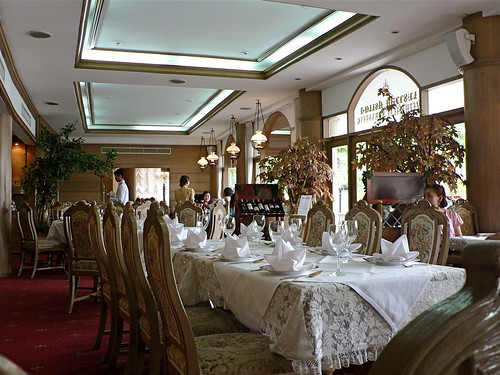
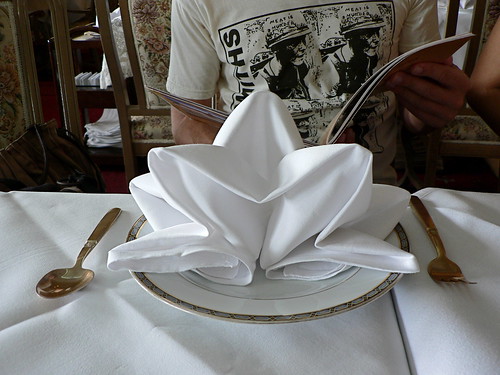
On the particular day that we went, there was the usual mix of old school Thai ladies with their bouffant hair do's and drawn in eyebrows, a scattering of western tourists attired in shorts and eating "prison styles" (one dish per person not shared) and some Japanese groups. Aong got excited remembering having eaten at the restaurant on special occasions as a child.
We ordered the mee grob, which I was informed is still not at good as Chote Chitr. But it was still pretty good.
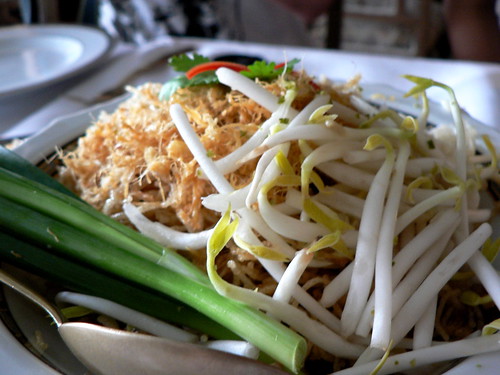
Yum Som Oh - Pomelo salad, it was simple and delicious.
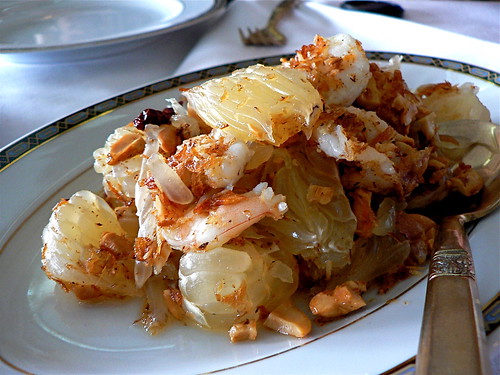
Cute little starter, which I forget the name of but apparently the restaurant is famous for it.
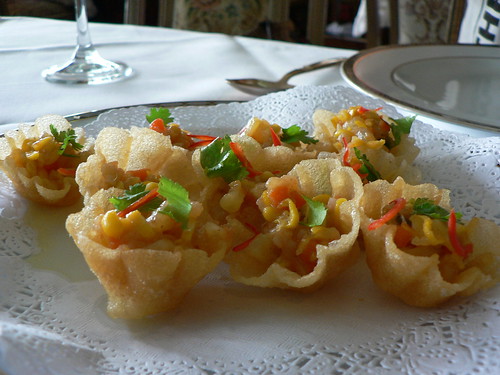
Hor mok, Thai's version of Amok
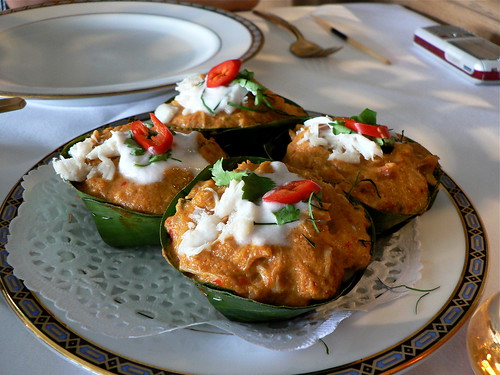
Fish maw (stomach) fried with egg and beansprouts
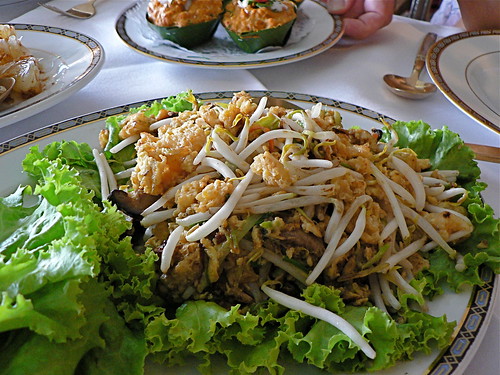
cocounut pudding
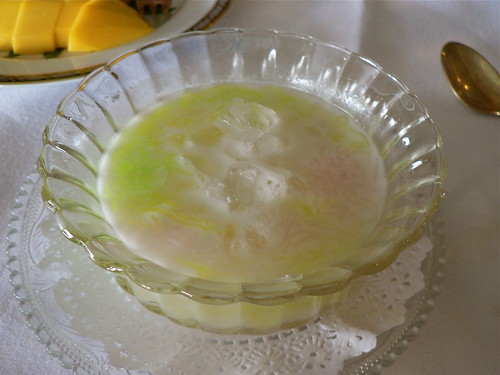
Mango sticky rice
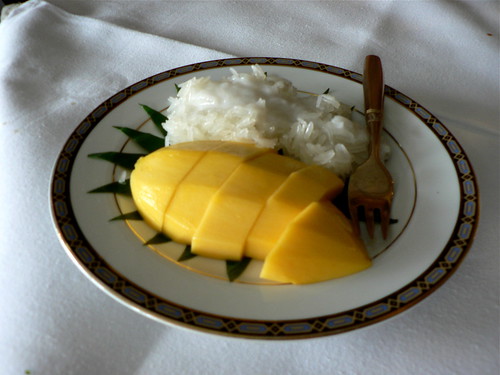
The food was excellent. Austin gave it the thumbs up and said it is one of the best upscale Thai restaurant experiences he has had. A big call. But I have to agree.
What was saddening however was when Aong and I went to the bathroom and Aong peered into the kitchen to see the staff eating what appeared to be left overs from the restaurant tables. Although we loved the food at Sorndaeng, perhaps Sorndaeng and all that it stands for has had its time. With its unnecessary airs and graces, its stuffy decor and chintzy facade, although the food is yummy, it can still make you feel ill.





